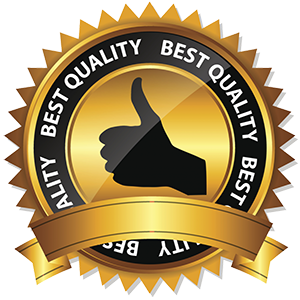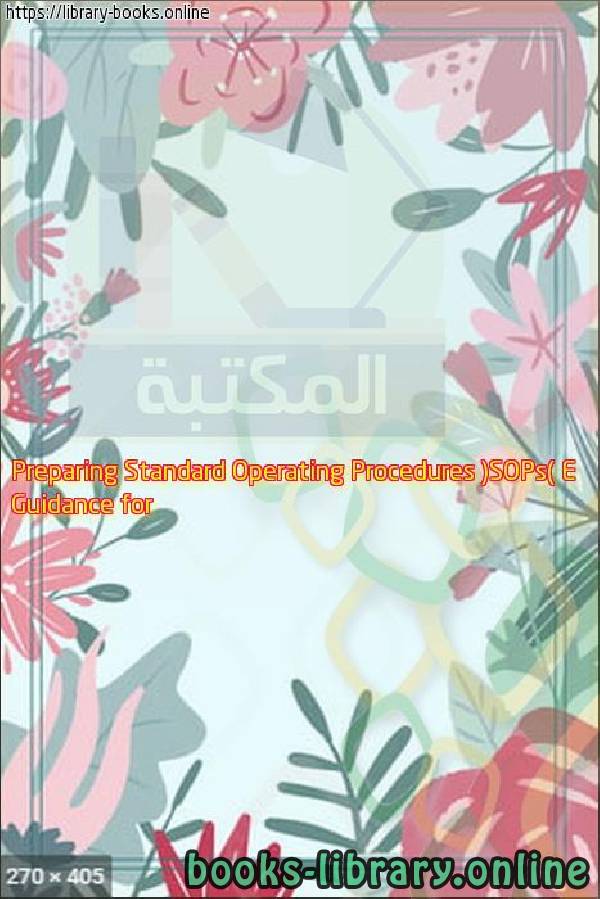📘 ❞ Guidance for Preparing Standard Operating Procedures (SOPs) E ❝ كتاب
الهندسة المدنية - 📖 كتاب ❞ Guidance for Preparing Standard Operating Procedures (SOPs) E ❝ 📖
█ _ 0 حصريا كتاب ❞ Guidance for Preparing Standard Operating Procedures (SOPs) E ❝ 2025 E: TABLE OF CONTENTS PERATING PROCEDURES 1 INTRODUCTION 1 1 Overview A Procedure (SOP) is a set of written instructions that document a routine or repetitive activity followed by an organization The development and use SOPs are an integral part successful quality system as it provides individuals with the information to perform job properly, facilitates consistency in integrity product or end result term “SOP” may not always be appropriate terms such protocols, instructions, worksheets, laboratory operating procedures also used For this document will describe both technical fundamental programmatic operational elements an organization would managed under work plan Quality Assurance (QA) Project Plan [EPA Requirements QA Plans (QA R 5) (EPA 2001a)], Chapter 5 EPA Quality Manual Environmental Programs, 5360 A) organization’s Quality Management Plan [EPA 2) (EPA 2001b)], 3 EPA This designed to provide guidance preparation SOP within 1 2 Purpose detail regularly recurring processes are conducted followed within They way activities performed facilitate consistent conformance requirements support data They describe, example, actions such as analytical processes, maintaining, calibrating, using equipment SOPs are intended specific facility whose described assist that maintain their control assurance ensure compliance governmental regulations If correctly, limited value In addition, best will fail if they Therefore, needs reviewed re enforced by management, preferably direct supervisor Current copies need be readily accessible reference areas those actually performing the activity, either hard copy electronic format, otherwise serve little purpose Benefits minimizes variation promotes through consistent implementation process procedure organization, even there are temporary permanent personnel changes can indicate compliance organizational EPA G 6 April 2007 and training program, since they should provide detailed It opportunities for miscommunication address safety concerns When historical being evaluated for current use, valuable reconstructing project when no other references available frequently checklists inspectors when auditing Ultimately, benefits valid reduced effort, along with improved comparability, credibility, legal defensibility needed published methods utilized an SOP standard method, specify be followed greater than appear method how, at all, differs from any options this follows As noted ASTM D5172 91 (2004), Guide Documenting Operating Procedures Used Analysis Water, “a significant variability results generated different laboratories analyzing same samples citing general reference due differences test actually performed each These often caused slight or adjustments allowed general reference, but affect final results " Using a correct well minimize 4 Writing Styles concise, step step, easy read format information presented unambiguous overly complicated active voice present verb tense "you" used, implied not be wordy, redundant, lengthy Keep simple short Information be conveyed clearly explicitly remove doubt what required Also, flow chart illustrate follow style guide your organization, e g , font size margins الهندسة المدنية مجاناً PDF اونلاين قسم خاص بكتب للتحميل مجال وهي أحد فروع والمعنية بدراسة وتصميم وتحليل المنشآت المختلفة كالأبنية السكنية والخدمية والطرق والجسور والأنفاق والمطارات والموانئ وشبكات إمداد مياه الشرب ومحطات ضخ المياه الصرف الصحي التنقية ومعالجة والسدود وكذلك مشاريع الري والإشراف عمل هذا أثناء فترة استمرارها لذا لا يجوز حصر العلم بأنه المعني بالتصميم وحده فقط وهي كأي علم تتطور باستمرار ودون توقف وفي الآونة الحديثة ترابطت مع التطور الصناعي بشكل كبير لإنتاج مواد إنشائية جديدة ومتطورة تفي بالمتطلبات التي تكون دائما متزايدة من المجتمع A special section books civil engineering one branches concerned studying, designing various installations residential service buildings, roads, bridges, tunnels, airports, ports, drinking water supply networks, pumping stations, sewage purification treatment dams, irrigation projects, supervising Establishments during period continuation, so permissible limit flag design alone

TABLE OF CONTENTS
PERATING PROCEDURES
1.0 INTRODUCTION
1.1 Overview
A Standard Operating Procedure (SOP) is a set of written instructions that document a
routine or repetitive activity followed by an organization. The development and use of SOPs are
an integral part of a successful quality system as it provides individuals with the information to
perform a job properly, and facilitates consistency in the quality and integrity of a product or
end-result. The term “SOP” may not always be appropriate and terms such as protocols,
instructions, worksheets, and laboratory operating procedures may also be used. For this
document “SOP” will be used.
SOPs describe both technical and fundamental programmatic operational elements of an
organization that would be managed under a work plan or a Quality Assurance (QA) Project Plan
[EPA Requirements for QA Project Plans (QA/R-5) (EPA 2001a)], or Chapter 5 of the EPA
Quality Manual for Environmental Programs, (EPA Manual 5360 A) and under an organization’s
Quality Management Plan [EPA Requirements for Quality Management Plans (QA/R-2) (EPA
2001b)], or Chapter 3 of the EPA Quality Manual. This document is designed to provide
guidance in the preparation and use of an SOP within a quality system.
1.2 Purpose
SOPs detail the regularly recurring work processes that are to be conducted or followed
within an organization. They document the way activities are to be performed to facilitate
consistent conformance to technical and quality system requirements and to support data quality.
They may describe, for example, fundamental programmatic actions and technical actions such
as analytical processes, and processes for maintaining, calibrating, and using equipment. SOPs
are intended to be specific to the organization or facility whose activities are described and assist
that organization to maintain their quality control and quality assurance processes and ensure
compliance with governmental regulations.
If not written correctly, SOPs are of limited value. In addition, the best written SOPs will
fail if they are not followed. Therefore, the use of SOPs needs to be reviewed and re-enforced by
management, preferably the direct supervisor. Current copies of the SOPs also need to be
readily accessible for reference in the work areas of those individuals actually performing the
activity, either in hard copy or electronic format, otherwise SOPs serve little purpose.
1.3 Benefits
The development and use of SOPs minimizes variation and promotes quality through
consistent implementation of a process or procedure within the organization, even if there are
temporary or permanent personnel changes. SOPs can indicate compliance with organizational
EPA QA/G-6 1 April 2007
and governmental requirements and can be used as a part of a personnel training program, since
they should provide detailed work instructions. It minimizes opportunities for
miscommunication and can address safety concerns. When historical data are being evaluated
for current use, SOPs can also be valuable for reconstructing project activities when no other
references are available. In addition, SOPs are frequently used as checklists by inspectors when
auditing procedures. Ultimately, the benefits of a valid SOP are reduced work effort, along with
improved comparability, credibility, and legal defensibility.
SOPs are needed even when published methods are being utilized. For example, if an
SOP is written for a standard analytical method, the SOP should specify the procedures to be
followed in greater detail than appear in the published method. It also should detail how, if at
all, the SOP differs from the standard method and any options that this organization follows. As
noted in ASTM D5172-91 (2004), Standard Guide for Documenting the Standard Operating
Procedures Used for the Analysis of Water, “a significant part of the variability of results
generated by different laboratories analyzing the same samples and citing the same general
reference is due to differences in the way the analytical test methods and procedures are actually
performed in each laboratory. These differences are often caused by the slight changes or
adjustments allowed by the general reference, but that can affect the final results." Using a
correct well-written SOP can minimize such differences.
1.4 Writing Styles
SOPs should be written in a concise, step-by-step, easy-to-read format. The information
presented should be unambiguous and not overly complicated. The active voice and present verb
tense should be used. The term "you" should not be used, but implied. The document should not
be wordy, redundant, or overly lengthy. Keep it simple and short. Information should be
conveyed clearly and explicitly to remove any doubt as to what is required. Also, use a flow
chart to illustrate the process being described. In addition, follow the style guide used by your
organization, e.g., font size and margins.
#2K
0 مشاهدة هذا اليوم#12K
1 مشاهدة هذا الشهر#13K
16K إجمالي المشاهدات- 🎁 كن أول كاتب اقتباس في هذه الصفحة واحصل على هديّة 15 من النقاط فوراً 🎁

